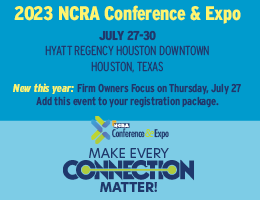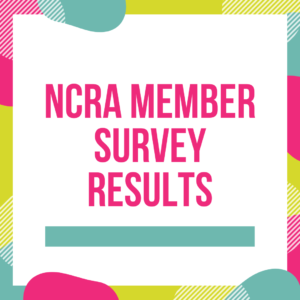Ann Gomez, a productivity consultant who presented at the NCRA Firm Owners Executive Conference in April 2016, offered tips about time management to NCRA staff, and several of her suggestions can be adopted by anyone. Early on in her presentation, she noted that our attention is split between wanting to be accessible and needing to focus. Several studies over the past decade show that focused attention is important to everyone’s daily lives. Email, Gomez points out, is one of the new technologies that drive people to feel the need to be available to anyone all the time, as are cell phones and so many of the social media networks.
Productivity studies in recent years have offered new insight into the way we work. For instance, Gomez pointed out that your willpower and the ability to work on hard tasks are highest in the morning, and that adopting this daily habit of tackling the worst task early in the day prevents procrastination and, in the long term, burnout. Alternatively, using this information, some people instead choose to set aside time each morning to work on their most important long-term goals.
Gomez also suggests calling your to-do list a master plan to help change your mind-set about tackling what you need to do. The master plan should work on the five C’s:
- Have only one place where you keep all of your lists about what needs to be done. It can be a physical notebook, an online note program, or even an Excel or Word document where you include everything that needs to be done. It’s important to find a system that works for you.
- Write everything down. Don’t rely on your memory.
- Figure out your categories, which help you to prioritize. You might have a section for projects, phone calls, personal to-do lists, or more. (When asked, she said that some people might find it better to keep one list for work and one for personal, but that it was mostly personal preference.)
- Have a deadline. You can use deadlines as a proxy for priorities; if a deadline passes, renegotiate the deadline. If it’s a large project, add interim deadlines if they aren’t already assigned. When you note that you don’t have enough time for a project, work with the person to manage expectations and prioritize your work.
- Use it, look at it, cross it off, and consult it on a real-time basis. Gomez suggests looking at your plan at least once a day, maybe three or four times a day.
Once you have an established system, Gomez advises that you figure out your top priorities – maybe two or three things – and determine what action is needed. Once you have your priorities, take time each day to focus and move forward on your priorities, and find ways to protect that time.
Gomez admits that you have to figure in time for work that doesn’t fit with your top priorities — perhaps you need to respond to emails or make calls. How you plan your day should reflect those realities, and you can add those tasks to your agenda to make sure that those things are taken care of too.
As she closed the session, Gomez reminded attendees: Is the goal to just get by, or is the goal to thrive? Get in tune with what works for you, so you can improve your focus and gain more energy.












